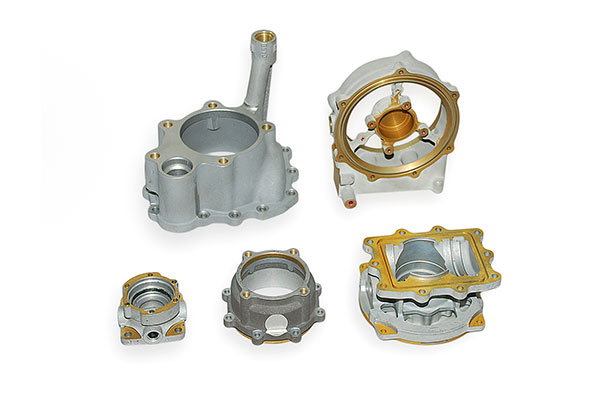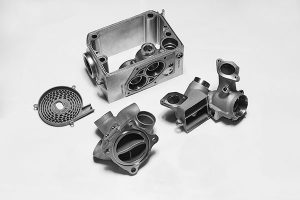Inside Casting & Machining Products (Part 1)
Part One: Investment Casting
Investment casting is one of the oldest manufacturing processes that is still in use today––in fact, investment casting has been widely used to form metal parts for thousands of years. This versatile metalworking method allows manufacturers to create complex components of any size with great accuracy, intricacy, and consistency.
Investment casting is known for the variety of materials that it can accommodate, including a wide range of metals and high-performance alloys. Some of the most commonly used metals and alloys in investment casting include:

- Aluminum alloys
- Stainless steel
- Super alloys
- Low-alloy steel
- Cast iron
- Copper alloys
Because of its versatility, investment casting is used in a number of industries. It is particularly well-suited to high-temperature applications in the aerospace and automotive.
Investment Casting Process
Investment casting involves the use of a wax pattern coated with a robust ceramic material. After allowing the ceramic material to harden around the wax pattern, the user heats the covered wax pattern until the wax melts. After draining the wax, the hardened ceramic can be used as a cast into which molten metal can be poured. Below, we dive more closely into the step-by-step process of investment casting.
- Designing the tool
The manufacturer designs an initial die into which wax will be introduced. - Creating the wax pattern
Molten wax is injected into the initial die to form a wax pattern. - Building the ceramic mold
A ceramic material is applied to the wax pattern to form a durable coating in the shape of the pattern. - Melting and pouring
The ceramic mold is heated until the wax has completed melted. As soon as the wax is drained, the metal or alloy to be used in the component is melted down and poured into the pre-heated mold. The metal alloy will solidify as it cools. - Breaking the mold
Once the metal or alloy has solidified, the ceramic mold is broken and removed from the cast component. Any additional cutting, grinding, shot blasting, and cleaning can be performed as needed to ensure that the part takes the desired shape or format. - Finishing the metal
Customers can incorporate additional treatments and processes to add special features or looks to their newly cast metal component to make it ready for assembly.
Advantages of Investment Casting
Investment casting remains in widespread use after thousands of years because of the numerous advantages that it offers over alternative metalworking techniques. Compatible with nearly every metal and alloy used in heavy industry today, it enables users to cast strong but thin-walled and lightweight components of great detail and complexity regardless of the material used.

Because of its high accuracy and the superior surface finishes that it yields, investment casting largely eliminates the need for secondary machining, helping customers save costs and shorten production timelines.
Since 1998, Impro has provided high-precision, high-quality casted metal components for customers across industries. Our talented team of experts has extensive experience with a variety of casting processes––including investment casting––ensuring that we can provide any client with accurate, reliable, and consistent casted parts for use in a wide range of applications. Regardless of your needs, we’re here to supply you with a durable and efficient solution to your operational challenges.
To learn more about investment casting, or our other casting processes, download our eBook, Comparing Casting Processes to help determine which process best fits your unique application.
This is part one of a blog series. Check out part two.
